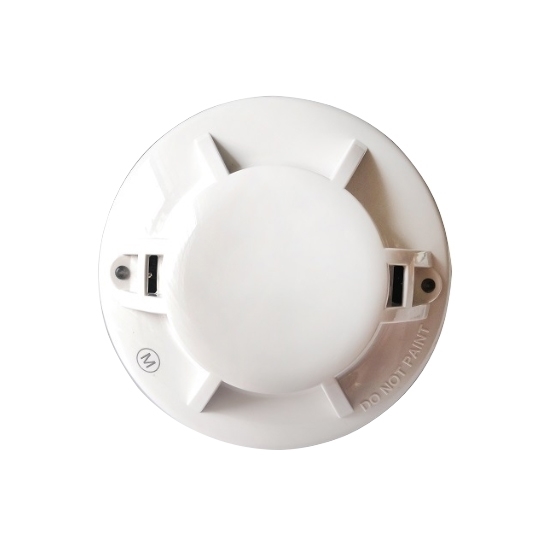
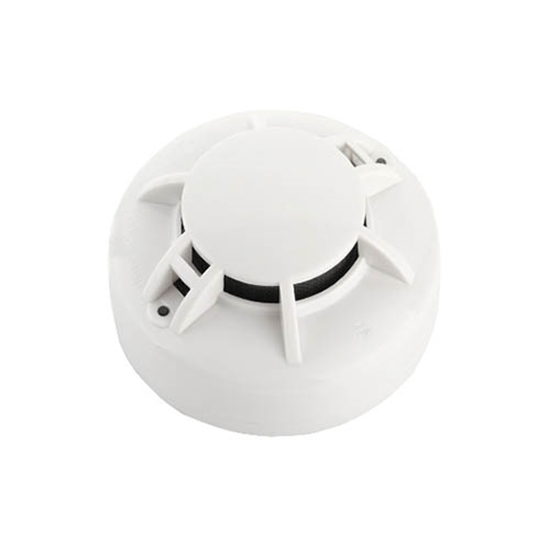
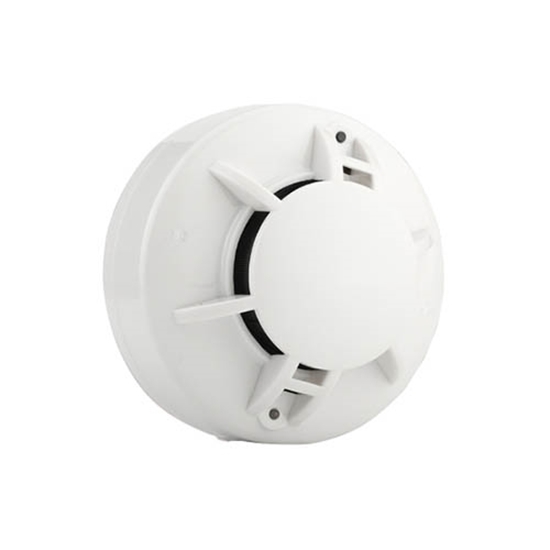
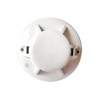
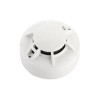
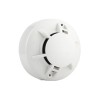
Photoelectric Smoke Detector, Dual Sensor, Smoke Alarm
from
$90.39
Ex Tax: $90.39
- Stock: In Stock
- Model: RDDLZ-SMOKE-RS411
- Weight: 1.00
- SKU: RDDLZ-SMOKE-RS411
Available Options
Create unlimited custom product blocks and display them in accordions or tabs or open blocks. Each block can be assigned to all products at once or specific products according to advanced criteria.
Create unlimited custom product blocks and display them in accordions or tabs or open blocks. Each block can be assigned to all products at once or specific products according to advanced criteria.
Photoelectric smoke alarm equipped with high-sensitivity thermistor sensor to upload the temperature to the controller in real time. Work at -40°C~ 85°C and detection angle 360°, detection distance reach to 40-60m. The detector needs to communicate with the host computer through the RS485 bus.
Specification
| Model | RDDLZ-GM-RS411 |
| Power supply | DC 18V~32V |
| Electric current | Quiescent current ≤ 4mA |
| Alarm current ≤ 6mA | |
| Smoke Sensitivity | 0.1% ~ 5% OBS (adjustable) |
| Relative humidity | ≤95% RH (40°C ±2°C) (no condensation) |
| Detect light source | 470nm/ blue light + 940nm infrared light |
| Operating temperature | -40℃~85°C |
| Shell material | Fireproof ABS |
| Alarm temperature | 57°C~ 62°C |
| Dimensions | 55mm x 102mm |
| Communication method | MODBUS RTU |
| Detection angle | 360 degrees |
| Detection distance | 40-60 (m2) |
| Quiescent Current | ≤1mA (uA) |
| Operating Voltage | DC 9V~32V |
| Alarm current | ≤5mA (mA) |
| Operating temperature | -10℃~50℃ |
| Scope of application | All fire hazards |
| Installation method | Ceiling type |
| Communication method | 485 communication mode |
Dimension
Terminal connection method
| Terminal number | Terminal identification | Terminal function | Wiring Instructions |
| 1 | IN - | Negative pole of power supply ( DC 24V- ) | It is recommended to use a wire core greater than 0.75 square mm wire |
| 2 | IN + | Positive pole of power supply ( DC 24V+ ) | |
| 3 | A | RS485 bus A | It is recommended to use a wire core greater than 1.0 square mm twisted-pair wires (parallel wires not recommended) |
| 4 | B | RS485 bus B | |
| 5 | E | Connect the cable shield | Connecting the cable shield |
Feature
- Photoelectric smoke alarm accurate measurement with protection circuit, made of environmentally friendly material. Thermal response probe, efficient and accurate. Worry-free after-sales, national guarantee.
- Best smoke detector layered structure, stable and reliable with ABS corrosion resistance, not easy to deform. It adopts a unique inverted spiral smoke inlet structure, blue light and red light dual light source smoke detection.
- Technology, as well as optimized data algorithms and intelligent judgment and other technologies are designed comprehensively. Optical smoke alarm can accurately detect smoke particles with smaller particle sizes, and can distinguish dust, water vapor, smog, pesticides and other interference sources similar to smoke.
- Fire detector can be widely used in rail transit, locomotives, shopping malls, warehouses, civil and industrial places such as motor rooms, fresh air ducts in power distribution cabinets, and new energy battery boxes.
- The dual sensor smoke alarm also has two high-sensitivity thermistor sensors, which can upload the ready-made temperature to the controller in real time. The temperature parameters can be used as a reference for fire alarm judgment. The dual sensor smoke detectors needs to be connected with the host computer through the RS485 bus.
Tips: What is photoelectric smoke detector?
- Photoelectric or optical smoke detectors consist of an infrared, visible, or ultraviolet source [usually an incandescent bulb or light-emitting diode (LED)], a lens, and a photoelectric receiver (usually a photodiode).
- In point detectors, all of these components are arranged in a chamber where the air may contain smoke from nearby fires. In large open areas such as atriums and auditoriums, beam or projected beam smoke detectors are used instead of chambers within the unit: wall-mounted units emit a beam of infrared or ultraviolet light that is received and processed by a separate unit or reflected by a reflector to a receiver.
- In some types, especially beam types, the light from the light source passes through the air under test and reaches the photoelectric sensor. The received light intensity is reduced due to scattering by smoke particles, dust in the air, or other matter; circuitry detects the light intensity and issues an alarm when it falls below a specified threshold (possibly due to smoke).
- In other types, usually the chamber type, the light is not directed at the sensor and the sensor is not illuminated without particles. If the air in the chamber contains particles (smoke or dust), the light is scattered and part of it reaches the sensor, which triggers the alarm
Builder in Product TAB
NEW! Since Journal 3.2, the much improved T.A.B (Tabs Accordion Blocks) system supports the page builder inside the tab content. Unlimited Blocks, Tabs or Accordions with any HTML content or the builder interface (supporting custom rows/columns/modules) can be assigned to any individual product or to certain groups of products, like entire categories, brands, products with specific options, attributes, price range, etc.
You can indicate any criteria via the advanced product assignment mechanism and only those products matching your criteria will display the modules.
Also, any module can be selectively activated per device (desktop/tablet/phone), customer login status and other criteria. Imagine the possibilities.
